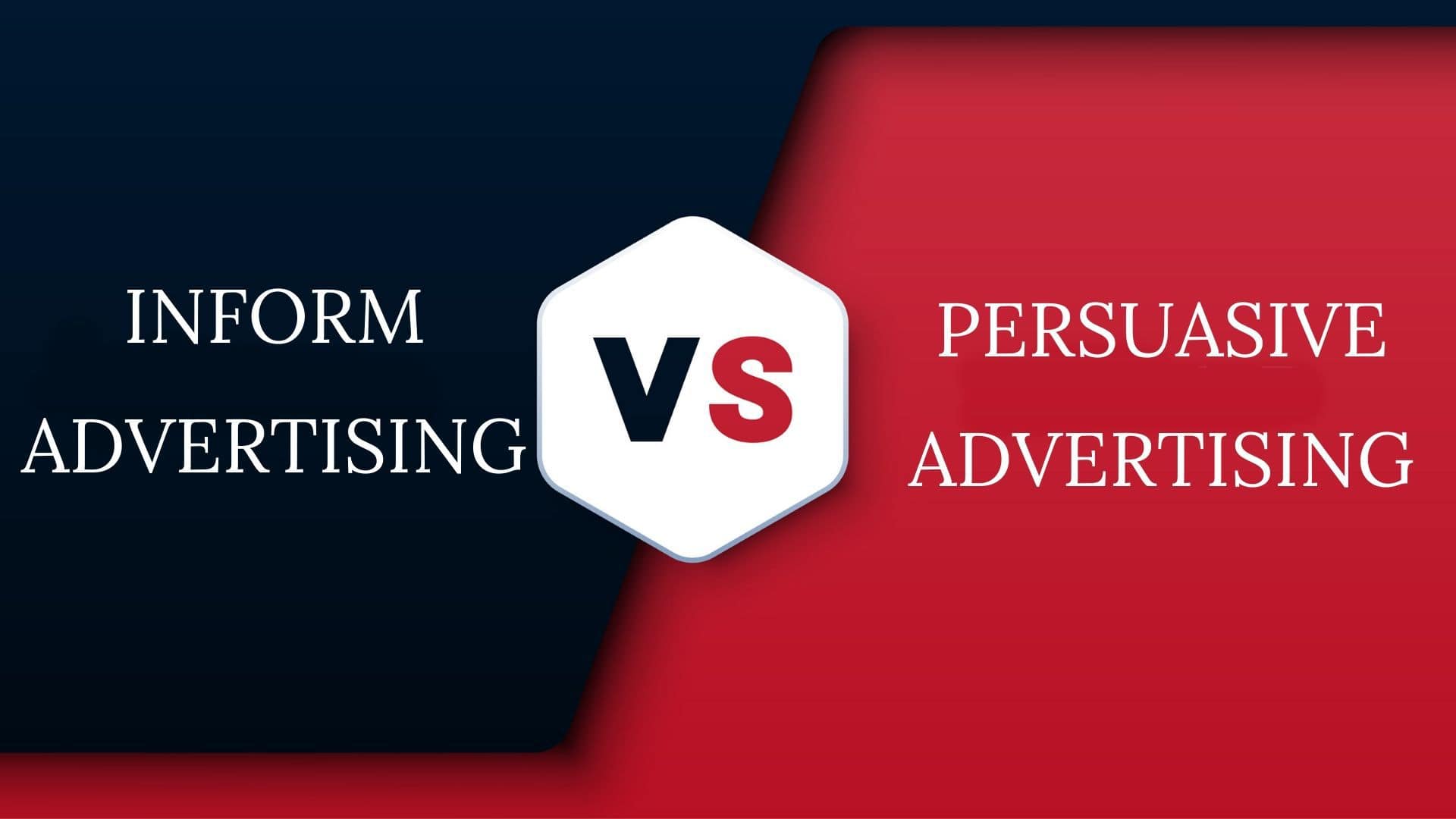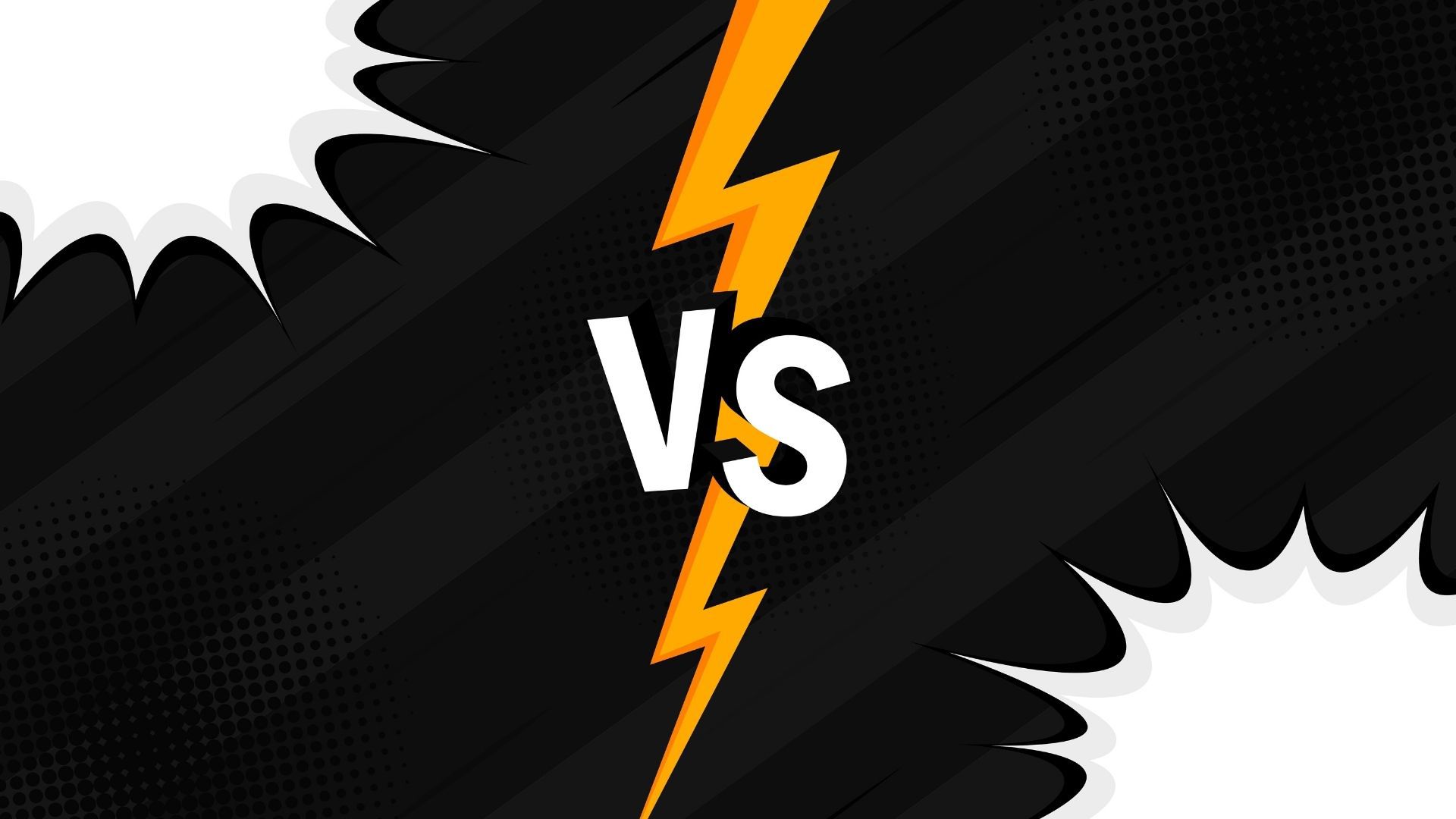
Informative Advertising Vs Persuasive Advertising | Marketing91
Informative Advertising Vs Persuasive Advertising
In any business, marketing and advertising are of the utmost importance. It helps you take the product or the service to the heads and hearts of the audiences. There are two basic types of advertising called informative and persuasive advertising.
The correct knowledge of these types of advertising enhances the way you use them. They increase the effectiveness, and the response of a brand or company gets from people. It increases the chances of getting prospective clients.
Advertising is a process that plays a crucial role in making things popular. It is a technique of informing as well as influencing people.
That is why; both of these advertising practices (Informative and Persuasive advertising) come in play to widen the reach of a product or service, generate more leads, boost conversions, and optimize sales.
The very primary difference between informative Vs persuasive advertising is depicted with their names. While informative advertising is more focused on facts, product features, and figures, persuasive advertising is more inclined towards developing an emotional connection with its target audiences.
In this post, we will understand both types of advertising with their examples so that you can use the right one as per your need. So, let us get started right away-
Table of Contents
What is Informative Advertising?
Informative advertising is a way of providing facts and figures to the audiences which conquer their heads. Simple facts are being stated, which one ends up believing.
It educates the viewers about the information related to the product. It is an objective way of advertising. There is the least emotional engagement with the audiences, yet the sharing of information is done compellingly.
The most crucial part of informative advertising is the truth in the facts stated.
The information needs to be true and the figures used need to be accurate. There should be no room for ambiguity or loopholes in the data. Any false information that gets circulated through this type of advertising can cause serious consequences.
Informative advertisements contain facts. But that does not mean they should be dry. They can have an emotional layer, as well.
Features of Informative Advertising
Informative advertising has some salient features. These features can be used smartly to get maximum benefits from such an advertisement.
1. Accuracy of information
As discussed above, the accuracy of the data matters the most. The facts used in the ad should be verified for authenticity. The figures used in the ad represent the position of the brand or the product.
It throws light on the success of the product. Many people rely on these attributes before buying anything. Every expenditure is an investment done by the user so there should be proper and fair returns offered against that.
Accurate information helps the user trust the brand more and makes these investments.
2. Updates and innovations
There are various industries like the software industry, the telecommunication sector, and the automobile sector, engaged in constant upgrades. With the same product, they explore and innovate to enhance their experience.
It is required to use these updates and innovations to the customers to know and invest in the newer range of products as well. In this case, informative advertising plays a vital role. The facts and information regarding these updates are showcased in a crystal clear manner through this type of advertising.
Also, if the brand is getting reformed or the factors like partnerships, logo, and the direction of the business are changing, the uninformed users might feel betrayed. Hence, informative advertising is helpful in these cases.
3. Use of in-house data
There is a misconception related to informative advertising that one needs to have global data and display that in the advertisement. But, if the brand is not that big and does not have a global standing, the use of global data is of no help. Here, one can also use in-house data.
It means the data about the company and the people related to it. The company’s track record and the necessary information about its pioneer members can be used effectively.
Along with unadulterated information, this infuses emotions in the people viewing the advertisement. If people have some insight into the company, they become interested in investing in the products or the services offered.
Additionally, the data obtained by surveys of the choices and responses from the users and clients can also be used. Some of the examples of informative advertising are-
Top 5 Examples of Informative Advertising
1. Miller Lite
When it comes to responding to competitors with facts and figures, this one is rated as one of the best informative ads.
When Bud Light took a few pokes at Miller Lite for utilizing corn syrup in their Super Bowl 53 promotions, Miller Lite chose to toss a couple of hard-hitting blows back to them.
After a day on Twitter, Miller Lite uncovered that their beer comprises lesser calories and carbs in comparison to the Bud Light. This helped the branding in informing individuals that drinking Bud Light and Miller Lite have comparable advantages.
2. Toast
Toast informative advertisement takes you through its solution in a step-by-step manner.
Toast advertisement unmistakably clarifies all its features and services. Highlights are included and clarified. There is minimal enthusiastic appeal, and the brand mainly focuses on what’s relevant.
3. Drink Responsibly
This drink responsibly ad campaign was brilliant in bringing out the fact that if you drink and drive, you risk your life. The poster comprises the literal connotation to it that alcohol can be dangerous for you mentally as well as physically. It is considered quite useful in informing drunken people about the consequences.
4. Salesforce Explains Its Advertising Studio
Salesforce comes up with straightforward ad campaigns that are considered one of the best examples of informative advertising.
It is an ad about advertising studio; they take you through how Salesforce’s Advertising Studio functions and what highlights you can use to optimize your experiences.
5. Siskiyou Eye Center
If you have heard about the old story that carrots can improve your vision, then this ad campaign has successfully exposed that using its informative strategy. That is the reason why this Siskiyou Eye Center ad is such an imaginative and informative ad.
While it makes jokes about this old folk tale, it’s depending on the realities of carrots not having the ability to improve your vision. It informatively talks about the Eye Center’s capacity to give quality treatment to your eyes to convince individuals to opt for their services.
Now, the time has come to delve into the world of persuasive advertising-
What is Persuasive Advertising?
The term persuasive advertising is derived from the word persuasion, which means to convince someone to the fullest.
Sometimes, pure facts and figures are not enough to grab the attention of the viewers. Many people have a stronger emotional sense than logical and rational thinking. It gets us to the importance of persuasive advertising. It is a way of convincing people and making them believe that they should invest in the product or service being promoted.
Their emotional sensibilities are captured and treated in a way to convince them. Emotions are the most significant possessions of man.
Hence, anything that strikes the right chord with them gets successful, point to be noted here is that there should be no emotional blackmailing with the help of untrue facts.
Persuasive advertising is a beautiful synthesis of events and information, along with emotions.
Techniques of Persuasive Advertising
Some techniques need to be used while going for persuasive advertising. They help in enhancing their effectiveness and gaining more profits.
1. Convey only one message:
If you want to grab the viewers’ maximum attention, you have to focus solely on one word. It is best to highlight the most prominent feature of your product.
If you focus on more number of things in a single advertisement, it will split the attention of the viewers, and they will not be convinced to buy the product. So, always focus only on one message that needs to be conveyed to the audiences.
2. Write in the second person:
This is one of the essential techniques to persuade someone to invest in your service or product. Writing in the second person gives a feel of a real conversation. It sets the reader thinking and contemplating on the message conveyed in the advertisement.
This promises conviction and prompt response from the viewers. It engages them emotionally, and they respond in the form of approaching you to buy the product.
3. The principle of scarcity:
There is hardly anyone who does not like to possess something rare and exquisite. Hence, this is an excellent way of convincing people.
When people realize that they have limited time to buy something and understand the scarcity of the product shown in the advertisement, they give a faster response. That is precisely why terms like ‘exclusive offer’ and ‘limited stock’ work in favour of the advertiser.
Some of the most common examples of persuasive advertising are-
Top 5 Examples of Persuasive Advertising
1. Siemens
Connecting emotionally is an inherent feature of this Siemens’ dexterous ad.
This one shows the advantages of their item by out of the blue setting their washers and dryers in a library to give you that they’re so quiet or hushed, even a custodian of the library wouldn’t have to shush them.
2. Mondo Pasta
This effective ad campaign utilizes the guerrilla marketing strategy for establishing an emotional connection with audiences.
The company impact-fully uses its ad copy in which the person slurping the noodle actually “can’t give up” because it is a rope attached to a dock.
With such a visual and unusual appeal, individuals’ eyes can’t relinquish this ad.
3. Slack
This ad comprises adorable and entertaining visuals that give a sample of existence with Slack.
Being a SaaS organization, Slack realizes that experts have feelings as well. With its effective ad campaign, it shows how much satisfaction this product can bring to the workspace.
Slack offers ground-breaking solutions to professionals and businesses, yet the company does not tell about its highlights in a dry manner. Instead, they adequately convey sentiments those highlights indicate.
What an individual gains emotionally from this product is similarly as convincing, if not more, than the level of expanded profitability on professional or business front.
4. Heinz
This one is again a very example of persuasive advertising that utilizes human sentiments and inclinations to their advantages.
When it comes to the foods, the term “hot” has various implications, such as being spicy or being hot.
Heinz splendidly utilized the undertone of high temperature to feature the spiciness of their ketchup, and their innovative strategy for imparting the highlights of their item helped them in a split second stand out for their audiences or even masses
5. HP’s Secure Printers
HP came up with a short video including Christian Slater known as the “The Wolf”, and through this campaign, HP utilizes a unique narrating strategy and an acclaimed big name.
This way, the company challenged the widespread perception that B2B businesses need to use conventional advertising.
This ad has gained 2+ million views watchers, and hence it is considered one of the best persuasive advertising examples.
Now, after knowing everything about informative and persuasive advertising, let us now understand which one would be the right pick for you-
Informative Advertising Vs Persuasive Advertising
Whether it is informative advertising or persuasive advertising, they both unquestionably centre on various parts of informing, influencing, and convincing your audience to make an ideal move.
Informative advertising can be useful if you have a product or service that ought to share the informative and step-by-step details of its working.
Persuasion advertising is exceptional when it comes to establishing an emotional connection with the audiences, as this plays a crucial role in converting potential customers into loyal customers.
Even your informative advertising campaign should also have some X-factors for triggering some favourable emotions.
All in all, informative and persuasive advertising work best when they are used together. You should both of these to make convincing messages.
The use of persuasive components in the informative ads and informative components in the compelling ads is considered very effective in generating more leads and optimizing conversions.
So, the type of advertising you want to go for depends on your product and how you wish to promote it.
A great and highly effective way of advertising is the amalgamation of both of these techniques, viz. persuasive advertising and informative advertising.
What are your thoughts about these advertising practices?









